Whether you’re a seasoned marathon runner or have just embarked on your first C25K, the last thing you want is back pain stopping you in your tracks (sometimes literally). Yet it’s a problem faced by many runners.
There are a number of reasons why you may feel aches in your back from running and whilst the culprit may not be running related, it could manifest itself as such.
Weak core muscles
It is the job of your core muscles to keep you upright and to protect and stabilise your spine. When you run, the instability in your spine increases the demand on your core muscles.
If the core is in an already weakened state, other muscles will compensate to try and keep the spine protected.
One study found that the compensating muscles caused greater shear forces (pushing and pulling of the vertebrae) in the lumbar spine. This means that although you may be running in the same way, with the same form, you are overloading the spine in ways which could cause pain and injury.
Weak back muscles
The deep back muscles stabilise and support the spine. Without adequate strength, the muscles fatigue more quickly, and re less able to control movement causing the aching in your back and leaving you vulnerable to injury.
Set aside time as part of your normal weekly routine to work on your core. Ideally, a couple of times a week, but even one good core training session will help you get stronger.
Concentrate on exercises which work the core as a whole such as the plank, rather than ones which focus on the superficial ‘six pack’ muscles, such as the traditional sit-up.
Sacroiliac Joint Dysfunction
The 2 sacroiliac joints are located at the bottom of your back, just next to the two knobbly bits of bone in your lower back. You can find them easily as there are two dimples in the skin over the joints.
When you run, your pelvis absorbs the shock from the impact and transmits it into the sacrum (at the very base of the spine) and up the spine.
If you run with an uneven load on each leg, the muscles around hip, spine and pelvis aren’t providing enough stability or have lax ligaments due to hormonal changes (often pre and post-natally) the joint can become irritated and painful as a result of excessive pressure being put on it.
If you have SI joint pain, you may feel an ache in your back which you can pinpoint to a location at the base of your spine, which can get worse when you run, climb stairs or stand up from a seated position.
To start to help alleviate symptoms caused by SI joint dysfunction, work on firing your glutes (the muscles in your buttocks) correctly. Once they are working as they should do, your body will better be able to withstand the load and support your pelvis as it should.
Biomechanics
Biomechanical problems in at the bottom of the kinetic chain may have a knock-on effect in the middle of it. For example, overpronation (where the foot rolls inwards as it strikes the ground) can cause poor movement patterns in the hips, which in turn can affect the spine.
To check if your feet are causing your back pain, a visit to a running specialist can ascertain whether you have any mechanical issues and the answer may be something as simple as switching to a different running shoe or using orthotic insoles in your trainers when you run.
To speak to a back pain specialist about preventing and treating back pain when you run, claim your complimentary ‘reduce back pain’ consultation, where you can discuss your back pain and receive advice on safe treatment for running related back problems to avoid pain long-term.
To claim, enter your details below and we’ll be in touch to arrange your session.
We all know by now that strength training is good, right? It’s great for boosting metabolism, maintaining a strong core and increasing bone density, amongst a vast multitude of other benefits.
We will always be strong advocates of weight training for these reasons but we do get some people coming through our door who started with all the right intentions and ended up doing more harm than good though lifting weights.
Here’s our short guide to reasons why your weights sessions could be damaging your back health. Avoid these the next time you hit the gym to make sure you’re getting the best from your workout and not compromising your back in the process.
1. You’re not paying attention to form
Mirrors at the gym can be a massive distraction – who wants to see themselves sweaty and breathless, right? – but the reason they are there goes beyond vanity.
Use the mirrors to check your technique throughout the exercise, paying particular attention to your back; not over-arching and maintaining the neutral ‘s’ shape of your spine.
2. You’re not engaging your core
Particularly important if you’re doing free weights, you need to activate and engage your core muscles as you lift to protect your spine and avoid back pain, as well as to maintain good form.
By engaging the core, you create intra-abdominal pressure in your trunk, which acts as an internal cushion, decreasing the compressive load on the discs and creating tension throughout the body in preparation for lifting.
The core links the upper and lower body and only through a tight core can you redistribute power generated in the lower body along the kinetic chain.
Insufficient intra-abdominal pressure can be the reason why the lower back gets rounded at the bottom of a deep squat. This pressure will also dictate how deep you can go in a leg-press, and how stable the low back is in a deadlift.
3. You’re ignoring pain
It’s easy to ignore niggles when you’re warmed up and in the zone, thinking it’s normal, or to take painkillers if you have an injury and ‘train through it’ but pain is a warning sign that we mustn’t ever ignore.
It’s our body’s way of telling us that something’s up, so listen, take a break and come back stronger when you’re fully recovered.
4. You only train the fun bits
It’s so common to only want to train the parts of your body which are on show, or which respond best to training.
An imbalance of strength can lead to poor posture and leave you vulnerable to injury. Train your body as a whole unit, making time to include every muscle group (especially the core which is often forgotten) and you’ll reap the rewards with a strong, balanced body.
5. You’re going too heavy
If you go too heavy without the strength to handle it, your form will suffer. Choose a weight which challenges you, but one at which you can also maintain a full range of movement without using momentum to follow it through.
To learn more about how to stay strong so you can keep training without having to worry about your back, visit us for a complimentary consultation.
You’ll learn how to activate and engage your core, receive a full assessment of your back and posture, and get advice on how to stay strong and reduce back pain long-term.
For more information and to register, click here.
Ask anyone why they don’t exercise as much as they’d like, and I’d bet that time is pretty much up there with the top 3 reasons. There are simple ways to fit exercise into your day so even the most time-poor amongst us can enjoy the benefits of being active.
1. Fit it into your everyday activities
Try including exercise into what you already do. Could you cycle or walk to work? Walk the kids to school and run back? Go for a walk on your lunch break instead of sitting at your desk? Get creative and remember that exercise goes beyond sweating it out at the gym, even just a brisk 30min walk has loads of health and fitness benefits.
2. HIIT
This is the perfect exercise for those short on time. Short, sharp intervals of intense exercise mean you can torch calories in just 20 mins. Better, still, you can…
3. Train at home
Google ‘HIIT home workouts’ or search YouTube and you’ll have access to hundreds of short workouts you can do at home with very little space and no equipment. This way you can do it whilst the baby naps, whilst dinner is cooking or when the kids are doing their homework.
4. Make it social
Rather than meeting over a cuppa or glass of wine, why not catch up with your friend for a walk in the park or jog around the neighbourhood? You can catch up on the latest in each other’s lives and as you’re chatting, you forget that you’re exercising, making it way more fun than slogging it out in the gym.
5. Get up earlier
I know it sounds obvious but going to bed half an hour earlier and getting up that half hour earlier can give you time for a short session at home before work. Even better, you’ll then be able to bask in your smug glow all day knowing you’ve done your exercise for the day.
There comes a time when every runner starts to chase their PB. We often (rightly) start our running journey with no pressure, entering races with echoes of “oh, I’m not worried about my time, I just want to finish”.
The thing is, increasing mileage teaches our body endurance, the only way we can become faster is by running faster. By introducing tempo – or lactate threshold – runs in to your training, you can increase your body’s lactate threshold – that is the point at which the body fatigues at a certain pace. In other words, your muscles can carry on contracting for longer before becoming fatigued by lactic acid levels, meaning you can run faster for longer.
How do you do it?
Aim for one tempo session a week. Start with a 10-minute easy jog then up to your tempo pace. This should be a ‘comfortably hard’ pace, one at which you’re not running flat out but still can’t manage a conversation. Stick at this pace for 20 minutes then cool down with another 5-10 min easy jog.
Build up to the 20-minute tempo block using intervals over a few weeks. Start with 5 x 3 mins at temp with a 1 min jog in between then add a minute onto your tempo time each week until you can maintain 5 mins.
If you’re training for a half marathon, run 3 miles at tempo (after a warm-up), easy jog for 5 minutes then a further 3 miles at tempo.
Using these techniques will make your training more efficient and help your muscles work better to carry you all the way to that PB.
We all know the adage ‘No pain, no gain’. But pain or discomfort when you’re exercising could, in fact, be your body’s way of telling you that something is up, and now’s not the time to be pushing through it.
There is, of course, the ‘good pain’ – if there can be such a thing – which we experience when we exercise, like the burning sensation in our muscles when we lift, or the can’t-walk-down-the-stairs tightness the day after a workout (the day after leg day is NEVER fun). This is totally normal, and all part and parcel of helping our muscles get stronger.
However, there are some types of pain which we should never ignore…
Pain with swelling
Swelling is the body’s natural reaction to injury. It floods the affected area with blood and fluid, which contain nutrients to feed the tissues and help it heal. Rest the affected area, keep it elevated if possible, and use ice to reduce the swelling. If the swelling persists, or returns with activity, pay a visit to your GP or sports injury professional as it may be a more severe injury.
Pain with a limited range of movement
If you’re experiencing pain in a joint, and you find you have limited movement at the same time, it could be a sign that something is in the way inside the joint, be it swelling or an obstruction. Rest, and get it checked out.
Painful popping or cracking
Small, painless pops and cracks are normal as gas bubbles pop in your joints as you move, but if you hear a pop or crack which is also painful. it could indicate a more serious tear or injury, especially if it swells after. Stop what you’re doing, elevate and ice if it’s swollen and get it checked out ASAP.
Persistent pain
Sometimes when you’re training, you get a twinge and it goes away as quickly as it came. However, if you feel pain which worsens, or doesn’t go away as you continue your session, don’t ignore it. Stop, as you may cause further damage if you continue.
One of the things we love the most about core training is that you can do it anywhere with just your bodyweight, making it perfect to do at home. And it’s free, which lets face it, is always a winner.
What if we told you though, that you can challenge your core further whilst increasing your stability and balance at the same time, as well as strengthening more of the deeper core and back muscles AND make it a fun workout?
Sounds good, right? By using some simple pieces of equipment, we’ll show you how to switch up your core training to accelerate your results. All are perfect if you have back pain and will help you get stronger, move more easily and reduce your pain.
Bosu Balance Trainer
Looking like half a gym ball (or a giant jumping popper, remember them?), as it’s name suggests it can really help with balance. By recruiting more of the smaller muscles surrounding your joints, you achieve greater stability which makes it a great rehab tool for knees, hips and ankles.
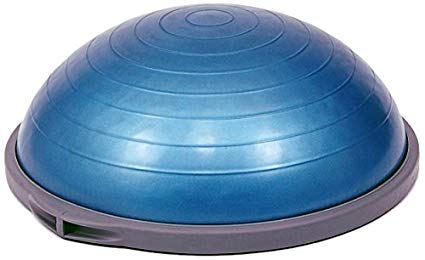
Stability Disc
By creating an unstable surface, this squishy, air filled disc forces you to use your core as you try and balance. Use it in the small of your back, under your shoulders (a particular favourite as the spiky bits give you a bit of a massage!) or even stand on them whilst performing upper body exercises for a real core challenge.
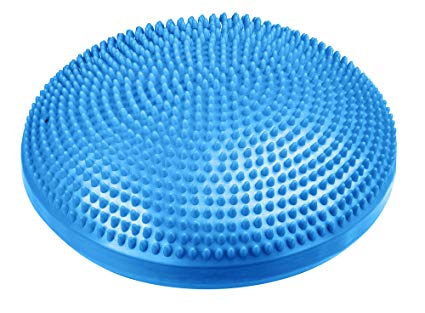
Swiss ball
These giant balls have been around for a while now and are becoming much more mainstream in gyms and training programmes. When you first start using them, you may feel like you’re going to fall off – many a time I’ve rolled off one of these, think of it as an initiation – but stick with it. From increasing your range of motion for simple sit-ups, to providing an unstable support for your legs in a plank, these balls are extremely versatile.
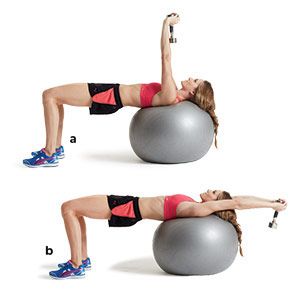
Pilates ball
Think of these as mini, squishier versions of the swiss ball. Named as such as they’re widely used in Pilates classes as a prop to encourage technique, a support for the low back and an unstable surface for certain moves. Place between your knees to maintain your position or, similar to the stability disc, place underneath the low back to increase instability and encourage your core to work more effectively.
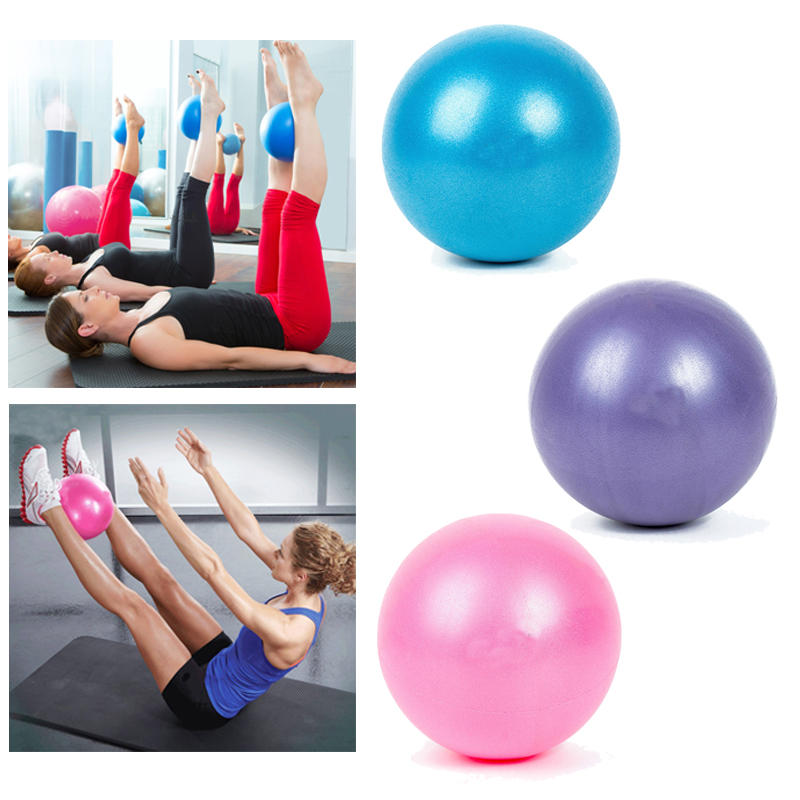
Foam roller
Not just for ironing out knots pre and post-exercise, you can use foam rollers as a support prop as you exercise. Even killing two birds with one stone and challenging your core with moves as you roll.
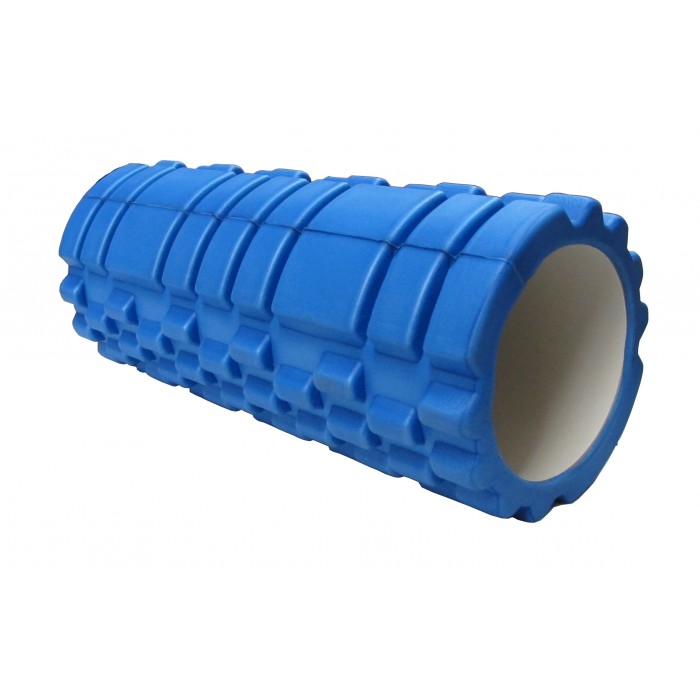
Please note that the disc, swiss ball, foam roller and Pilates balls are available to purchase from our online shop.
We all know by now that strength training is good, right? It’s great for boosting metabolism, maintaining a strong core and increasing bone density, amongst many other reasons.
We do, however, get some people coming through our door who started with all the right intentions but ended up doing more harm than good though lifting weights. Here’s our short guide to what to avoid the next time you hit the gym to make sure you’re getting the best from your workout.
1. Not paying attention to form
I know the mirrors in gyms can be a massive distraction (who wants to see themselves a sweaty, grunting mess, right?) but the reason they are there goes beyond vanity. Use the mirrors to check your technique, making sure your spine is neutral with no over-arching or bending as you lift.
2. Not engaging the core
Particularly important if you’re doing free weights, you need to activate and engage your core muscles as you lift to protect your spine and avoid back pain.
3. Ignoring pain
It’s easy to ignore niggles when you’re warmed up and in the zone (I know this from experience) or to take painkillers if you have an injury and ‘train through it’ but pain is a warning sign that we mustn’t ever ignore. It’s our body’s way of telling us that something’s up, so listen, take a rest and come back stronger when you’re fully recovered.
4. Only training the fun bits
It’s so common – especially as summer approaches – to only want to train the parts of your body which are on show, or which respond best to training. An imbalance of strength can lead to poor posture and leave you vulnerable to injury. Train your body as a whole unit, making time to include every muscle group (especially the core which is often forgotten) and you’ll reap the rewards with a strong, balanced body.
5. Going too heavy
If you go too heavy without the strength to handle it, your form will suffer. Choose a weight which challenges you, but one at which you can also maintain a full range of movement without using momentum to follow it through.
Often, when people decide to embark on an exercise regime, whether for fitness, fat loss or rehabilitation, the first place they think of going is the gym (or pool, or their bike but you get the idea – sweaty exercise, grr). However, there is one form of exercise which is often overlooked in favour of its higher-octane counterparts.
Yep, I’m talking about walking. We do it pretty much every day without thinking about it, but it could hold the secret to achieving your health goals, and here are 5 reasons we should do more of it:
It’s low impact
Making it the perfect exercise choice if you have joint injuries or pain. The weight-bearing element also means that it helps maintain muscle strength and bone density, leaving you less vulnerable to breaks.
It’s great for weight loss
Did you know that a brisk 60-minute walk (around 4.6 mph) can burn as many calories as a 30-minute jog? (around 6 mph) Walking is the underdog of the fat-loss scene and is much underrated. A brisk 60-minute walk 3 times a week can leave you just over 800 calories down, burning almost 1lb of fat in just a month (everything else being equal).
It’s free, with little to no equipment
If you have cool clothing (I’m guessing you do) and a comfy pair of shoes (again, pretty much a given) then you’re good to go. No membership fees, fancy kit or expensive equipment necessary.
It’s fun, social and fits in with your life
It’s very easy to fit walking into your daily routine. Consider getting up earlier and walking to work if you live close enough, walking the kids to school instead of driving, or setting aside some time each day for a stroll.
Another big tick is that the usual barriers don’t apply. No childcare? Take the kids with you (in a buggy or on a bike/scooter if they’re too little or reluctant walkers) No time? Go on your lunch break or talk your friends into a walk instead of meeting at a cafe/bar. Funds tight? It’s free – that excuse has no place here.
If you can recruit friends, a partner or kids, it can also help build your relationships. People find it easier to talk openly when they’re away from distraction and not in a face-to-face situation.
It’s very difficult to find a reason not to do it, and it’s fun and gives you headspace, making you less likely to want to make excuses in the first place.
It’s good for your health
Stating the obvious, right? But a recent study found that compared to people using the same amount of energy running, walkers experienced greater health benefits including reduced risk of heart disease, first-time high blood pressure and first-time high cholesterol. If that’s not enough encouragement to lace up your trainers and get out for a stride, then I don’t know what is.
Not just for sadists (if you’ve used one, you’ll know what I mean), our cylindrical, sometimes knobbly little friends which you find in the stretching area of the gym are fast becoming a firm favourite of ours.
We first came across them at a fitness convention way back in 2013 when we were subject to quite possibly one of the best core workouts we’ve ever done – you know the type when you’re afraid to cough, sneeze or err, get up out of bed.
Never ones to get sucked in by a sales pitch (okay, okay. It was 7pm on a Sunday night after a VERY intense 3 days of exercise and heavy learning. We were so exhausted we’d have bought anything – they certainly knew how to time it right) we headed home with our new toy under our arms.
Fast forward 5 years and what we thought might fall into the ‘fitness fad’ hole, along with slender tone belts and ab cradles (remember them?) are well and truly here to stay and we for one, couldn’t be happier. This is one bandwagon we were more than happy to jump on.
Here are our 3 reasons why we won’t be rolling off ours any time soon…
1. You can iron out your knots
By rolling and applying pressure to your muscles and fascia (connective tissue), you can simulate the same effect as a deep tissue massage.
If you’re feeling tight, or have niggles or ‘knots’, the pressure helps to release trigger points and break down any knots or tightness you feel.
2. It can help strengthen your core
Anything which makes you unstable will fire up your core muscles and get them working. What better way to add instability than putting your feet/body/arms on a giant rolling pin?
There are loads of things you can do to combine the muscle rolling (above) with core work, so you get more bang for your buck. For starters, take a look at this page which has 5 great moves to get you going.
3. It can get you fixed faster
By applying pressure to damaged tissues, you will boost your blood flow and circulation to the tissues. As your blood carries all the goodies your body needs to recover (oxygen, nutrients) you will flood it with goodness.
Another significant effect of increased circulation is the removal of the harmful stuff. Think of flushing out toxins and lactic acid, the latter being the stuff which causes the pain the next day, so the better you roll, the less sore you’ll feel afterwards. You’re welcome.
Oh, and a bonus fourth thing – it’s portable and (after a small initial investment, they’re not expensive) free! If you buy your own you can use it anywhere, any time.
So, there you have it. Now that you also love foam rollers, why not get one of your own? We have plenty in stock and much more equipment (and even clothes) for you to choose from!
Sounds obvious, doesn’t it? “uh, put on your daps and leg it down the road”. Not so much. I remember when I started running about 8 years ago. I had not long had my second baby (new Mums: do your Kegels) and wanted something which I could do any time of the day and which wouldn’t waste my valuable time by having to travel to do it.
So out I trundled, calling “back in half an hour” behind me as I flounced out of the door. Now, if you’re new to running, or can remember when you were new to running, you’ll appreciate my crushing disappointment when 2 minutes into my ‘run’ I was pretty much ready to drop.
So, you see, it’s not quite as simple as trotting off for a brisk 3 miles when you’ve never run before. But I did persevere and in the following 12 months completed both a 10k and half marathon. If ‘Mrs-I-can-only-run-for-2-minutes’ can do it, anyone can. As today marks 2 weeks until Simplyhealth’s Great Bristol 10k, here are my tips for anyone just starting out…
1. Don’t be disheartened
Arguably the most important point, keep in mind when you first start that it does take time. You may be one of the lucky ones who can bang out a 15-minute run when you start but then again, you may not. Keep the faith, log your progress and focus on your achievements along the way (I was ON TOP OF THE WORLD when I ran for 5 minutes non-stop).
2. Start with walk-run intervals
After a warm-up of a brisk walk, try running for 2 minutes and walking for 3. Next time, increase your run by 30 seconds and decrease your walk by the same amount. When you can run for 5 minutes (woo!) carry on with the intervals but this time only walk for a minute in between, increasing your running intervals until you feel comfortable enough to leave out the walking altogether.
3. Take it slowly
It does take time. Don’t try to force it and do too much too soon, or you will end up with an injury which will halt your running career before it even began. Listen to your body and don’t push yourself too far beyond your capabilities.
4. Rest
Once you start making progress and feeling the benefit, you may be tempted to run more often. ‘Runners High’ is a thing, and people do get addicted to that rush of endorphins you experience when you exercise. Great, if you stick to 3-4 runs a week but any more at this stage and you run the risk of overtraining and injury.
5. Get the right kit
All I would argue you need is a decent pair of trainers and some comfortable clothing (high-vis if you’re running in the dark. Safety first, kids). You don’t need to shell out on fancy gym-wear, but I would recommend the investment in a decent pair of running shoes, ideally from a specialist running shop but if not, aim for shoes designed for running (rather than cross-training). Getting the right support for your feet is important for both comfort and injury prevention.
6. Use motivation techniques
We all have those days when the sofa is way more appealing than getting out and pounding the streets, but psyche yourself up by using a great running soundtrack, running with friends or giving yourself a little reward for completing a run (I’m not talking a Mars Bar though, ok?)
And finally, enjoy it! Running can be great for both body and soul, with benefits which are way too numerous to mention. Get into your stride – geddit? – and you’ll never look back. If you’re not signed up yet, don’t forget to sign up for Simplyhealth’s Great Bristol 10k here, and for those of you with families, they do a much shorter Family Run too!